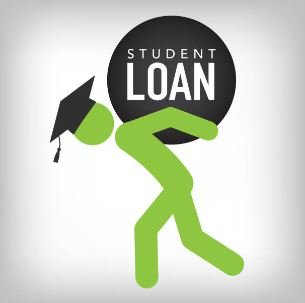Is Student Loan Forgiveness Still a Possibility in the USA?

The student debt crisis in the United States has reached staggering proportions, with over 45 million Americans owing a combined total of more than $1.7 trillion. The burden of student loans has far-reaching implications, affecting everything from homeownership and retirement savings to mental health and career choices. Amid this growing crisis, the question on many borrowers’ minds is: Is student loan forgiveness still a possibility in the USA? In this blog, we will explore the current state of student loan forgiveness, recent policy developments, potential paths forward, and the challenges that lie ahead.
The Current State of Student Loan Forgiveness
The concept of student loan forgiveness is not new. Several existing programs, such as the Public Service Loan Forgiveness (PSLF) program, offer relief to borrowers who work in qualifying public service jobs and make 120 qualifying monthly payments. However, these programs have been criticized for being overly complex and difficult to access. For instance, the PSLF program has seen a notoriously low approval rate, with many applicants denied due to technicalities.
In 2022, the Biden administration introduced temporary changes to simplify access to PSLF, allowing borrowers to receive credit for payments that previously did not qualify. Additionally, a pause on federal student loan payments, which began during the COVID-19 pandemic, has been extended multiple times, providing temporary relief to millions of borrowers. Despite these measures, broad-based student loan forgiveness remains a contentious and unresolved issue.
The Biden Administration’s Forgiveness Proposal
One of President Joe Biden’s key campaign promises was to forgive up to $10,000 in federal student loans per borrower, with additional relief for those who attended public institutions or historically black colleges and universities (HBCUs). In August 2022, Biden unveiled a plan to cancel $10,000 in federal student debt for borrowers earning less than $125,000 annually, with up to $20,000 in forgiveness for Pell Grant recipients.
The plan was met with both praise and criticism. Supporters argued that it would provide meaningful relief to millions of borrowers and help close the racial wealth gap, as Black and Latino borrowers disproportionately bear the burden of student debt. Critics, however, contended that the plan was too expensive, did little to address the root causes of rising college costs, and was unfair to those who had already paid off their loans or never borrowed.
Legal challenges quickly followed. Several conservative groups and states filed lawsuits arguing that the President lacked the authority to cancel student debt without Congressional approval. These cases have created a legal limbo, leaving borrowers uncertain about the future of the proposed forgiveness plan.
The Supreme Court’s Role
The U.S. Supreme Court has agreed to hear arguments related to the Biden administration’s student loan forgiveness plan. The outcome of this case is expected to have far-reaching implications not only for the 40 million borrowers who stand to benefit but also for the limits of executive authority. Legal experts are divided on how the Court might rule, with some suggesting that the justices could strike down the plan based on the argument that it represents an overreach of executive power.
If the Supreme Court rules against the plan, the path to student loan forgiveness would become significantly more challenging, likely requiring new legislation from a deeply divided Congress. Such a ruling would also set a precedent for future executive actions on other issues, making this a landmark case to watch.
Legislative Efforts and Proposals
While executive action has garnered the most attention, there have also been legislative efforts aimed at addressing the student debt crisis. Senators Elizabeth Warren and Bernie Sanders have been vocal advocates for more comprehensive debt cancellation, proposing plans to forgive $50,000 per borrower. However, these proposals have gained little traction in Congress, where bipartisan support is essential but elusive.
More modest legislative proposals include expanding income-driven repayment (IDR) plans to make monthly payments more affordable and capping interest rates on federal student loans. These measures, while falling short of full-scale forgiveness, could provide meaningful relief to borrowers struggling to make ends meet.
Income-Driven Repayment Reform
One potential path forward for student loan relief lies in reforming income-driven repayment plans. These plans cap monthly payments at a percentage of a borrower’s discretionary income and offer forgiveness after 20 to 25 years of payments. However, many borrowers have struggled with the complexity of these plans, poor servicing practices, and a lack of transparency around how payments are applied.
The Biden administration has proposed a new IDR plan that would lower monthly payments for undergraduate loans to 5% of discretionary income—down from the current 10%—and shorten the forgiveness timeline for borrowers with smaller balances. This plan also seeks to simplify the enrollment process, making it easier for borrowers to access the benefits. If implemented, these changes could serve as a form of “stealth forgiveness” by reducing monthly payments and ensuring that more borrowers ultimately receive forgiveness.
The Cost of Forgiveness
One of the most significant obstacles to broad-based student loan forgiveness is its cost. Estimates for Biden’s original forgiveness plan range from $300 billion to $400 billion over ten years. Opponents argue that this money could be better spent on making college more affordable for future students rather than providing a one-time relief to current borrowers.
Additionally, there are concerns about the potential inflationary impact of debt cancellation. Critics argue that injecting such a large amount of financial relief into the economy could drive up demand for goods and services, exacerbating inflation. However, proponents counter that because student loan payments primarily affect middle-income borrowers who have already been struggling with repayment, the impact on inflation would be minimal.
Addressing the Root Causes
While forgiveness could provide immediate relief to millions of borrowers, it does little to address the underlying causes of the student debt crisis—namely, the soaring cost of higher education and the lack of sufficient state funding for public colleges. Without broader reforms, there is a risk that debt levels will quickly rise again, putting future borrowers in a similar predicament.
Addressing these root causes would likely require a multifaceted approach, including increased federal and state funding for higher education, expanded Pell Grants, and stronger oversight of for-profit colleges. Policymakers are also exploring new funding models, such as income-share agreements (ISAs), where students repay a percentage of their income for a set period after graduation.
Public Opinion and Political Implications
Public opinion on student loan forgiveness is sharply divided. Surveys indicate that a majority of younger voters and Democrats support some form of debt cancellation, while Republicans and older voters tend to oppose it. This divide reflects broader political and ideological differences about the role of government in addressing economic inequality.
The political implications are significant. With the 2024 elections approaching, both parties are keenly aware that their stance on student debt could influence young voters—a demographic that tends to have lower voter turnout but has become increasingly engaged in recent elections. How candidates address the issue could play a critical role in shaping the political landscape in the years to come.
The Future of Student Loan Forgiveness
So, is student loan forgiveness still a possibility in the USA? The answer remains uncertain. Much will depend on the Supreme Court’s ruling, legislative action in Congress, and the political will to address both the symptoms and root causes of the student debt crisis. In the meantime, borrowers remain in limbo, uncertain about their financial futures.
Interestingly, the ongoing debate about debt forgiveness has also intersected with broader cultural and generational shifts. For instance, younger generations that advocate for student loan relief also tend to embrace new trends, from Raz Vape products to decentralized finance. These shifts highlight a growing desire for economic autonomy and fairness—a sentiment that policymakers cannot afford to ignore.
The coming months will be crucial in determining the path forward for student loan forgiveness. Whether through executive action, legislative compromise, or a combination of both, the resolution of this issue will have profound implications for millions of Americans and the broader U.S. economy.



